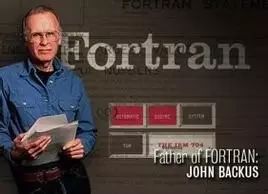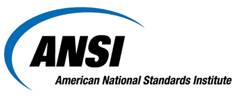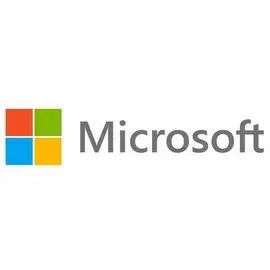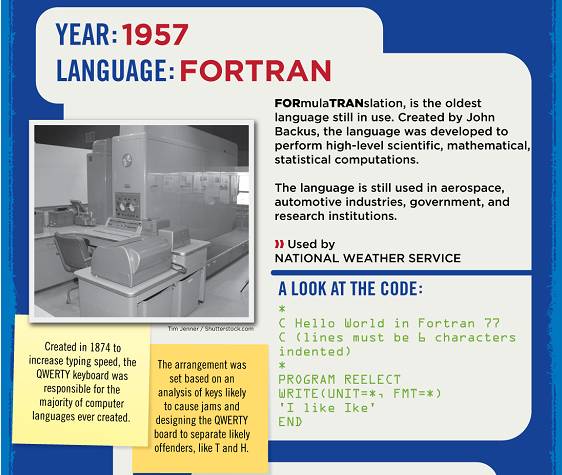
FORTRAN

Fortran is an abbreviation of “Formula Translation”. It is the world’s first high-level programming language for computers, widely used in scientific and engineering computations.

FORTRAN plays an important role in numerical, scientific, and engineering computations due to its unique features. (Versions prior to Fortran 90 are known as FORTRAN, while versions from Fortran 90 onwards are written as Fortran.)

In 1951, John Backus of IBM began researching and developing FORTRAN to address the shortcomings of assembly language, officially releasing it in New York in 1954. It wasn’t until 1957 that the IBM 704 successfully implemented the first FORTRAN compiler, successfully running a FORTRAN program for the first time.
PROGRAM HELLOWORLD
PRINT *, 'Hello, World!'
END
A year later, the commercialized FORTRAN II also made its debut, and thereafter, the FORTRAN language developed rapidly, with various versions being implemented on other computers.
As the versions of FORTRAN continued to update and change, issues of language incompatibility became increasingly prominent, prompting the standardization of the language.
1966
The American National Standards Institute (ANSI) officially announced two standard texts after four years of effort: the American National Standard FORTRAN (ANSI X3.9-1966) (referred to as FORTRAN 66) and the American National Standard Basic FORTRAN (ANSI X3.10-1966), which initially addressed the compatibility issues of the language.

Late 1960s
Structured programming languages began to emerge, such as ALGOL, PASCAL, MODULA, and C. (ANSI) also revised FORTRAN 66 in 1976 and officially announced the programming language FORTRAN ANSI X3.9-1978 (referred to as FORTRAN 77) in April 1978.
Late 1980s
Research on structured and modern FORTRAN 77 began to rise. In May 1991, ANSI announced the new American National Standard FORTRAN (ANSI 3.198-1991) (referred to as FORTRAN 90).

On the Windows platform, Microsoft seamlessly integrated FORTRAN 90 into the Developer Studio integrated development environment, launching Microsoft FORTRAN PowerStation 4.0, which truly realized visual programming for FORTRAN 90, completely abandoning the traditional DOS environment (character interface) and transitioning to the modern Windows environment (window interface), sharing the rich resources of Microsoft’s Windows platform.

In March 1997, Microsoft and Digital Equipment Corporation (DEC) joined forces to research, develop, and launch a more powerful new version of FORTRAN: Digital Visual FORTRAN 5.0!

The greatest feature of Fortran is its natural description that closely resembles mathematical formulas, providing high execution efficiency in computers.
It is easy to learn, with rigorous syntax.
It can directly perform operations on matrices and complex numbers, similar to MATLAB.
Since its inception, it has been widely used in numerical computation, accumulating a large number of efficient and reliable source codes.
Many specialized large numerical computing machines have been optimized for Fortran.
It is widely used in parallel computing and high-performance computing fields.
The successive releases of Fortran 90, Fortran 95, and Fortran 2003 have endowed the Fortran language with some features of modern high-level programming languages.
Undeniably, compared to currently popular high-level languages like JAVA and C#, Fortran lacks creativity.
Due to Fortran’s long-standing dominance in engineering computation, many excellent engineering calculation software are written in Fortran, such as ANSYS and Marc. To utilize the advanced features of these commercial software, one must first learn Fortran to write application programming interfaces.
In numerical computations, Fortran remains irreplaceable. The Fortran 90 standard introduced features such as array computations, which are very beneficial for matrix operations. In array operations, Fortran can automatically perform parallel computations, a capability that many programming languages do not possess.



This edition was edited by: Zhang Jiyan
